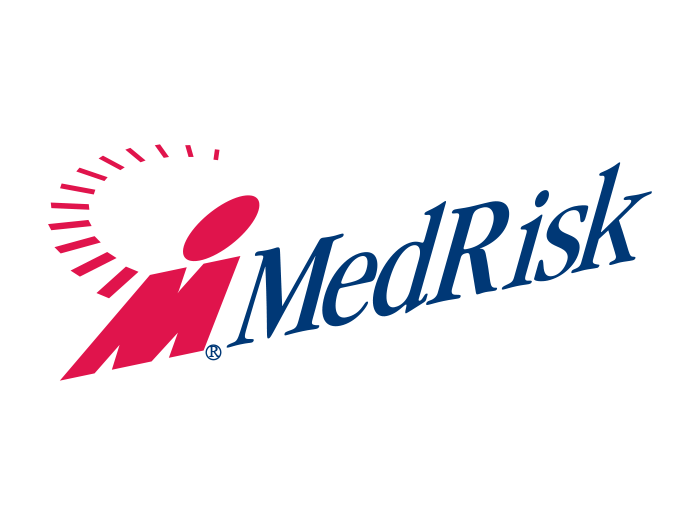It’s Time for Risk Managers to Take Charge. C-Suite Execs Say These 3 Traits Make a Strong Leader

Over the years, risk management has transformed from an insurance-buying function to a strategic factor in a businesses’ long-term success. Especially today amid hardening markets, organizations are forced to rethink their approach to risk mitigation and transfer, shifting focus to loss control and prevention over indemnification.
The role of risk manager, therefore, is integral to a healthy bottom line.
But risk managers have never been tested quite like they have this past year. Pandemic-driven shutdowns, economic recession, workforce changes and concerns over the health and safety of employees and customers all threw a wrench into whatever plans businesses had for themselves in 2020.
Layer protests, civil unrest and an above-average hurricane season on top of that, and risk managers found themselves facing an onslaught of new and shifting exposures every day.
To push through these headwinds, companies need risk managers who can lead; professionals who engender trust in their colleagues, know how to make the most of the resources around them, and who can communicate and execute their company’s strategic vision.
How can risk managers best fill this need?
We asked some C-suite executives what characteristics and qualities mark a true leader. These are the top three traits they identified and how they keep their leadership instincts sharp.
1) Drives Positive Change Amid Challenges
New challenges arise every day. The past year especially has shown us just how unpredictable life and business can be. But even in the face of unprecedented hardships, leaders look to tomorrow, navigating current obstacles with a long view of how their organization will not just survive but emerge stronger.
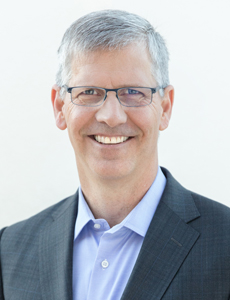
Michael Combs, president and CEO, CorVel Corporation
“Leadership demands forward thinking, not just putting out the fires of the moment,” said Laura Crossen, vice president of financial management at Bed, Bath and Beyond.
“You have to think about driving change while navigating change. In the face of problems we didn’t choose, how do we create positive outcomes?”
Driving positive change demands an ability to separate wheat from chaff, prioritize and plan. Leaders can identify specific, measurable goals and concrete actions that lead there.
“Outcomes-based results are the best way to gauge our efforts as leaders. There is at times a filter necessary to drive focus in this environment — strong prioritization and sequencing of actions is what yields results,” Crossen said.
Optimal use of resources is part and parcel of driving positive results despite unforeseen changes.
“We’re all being asked to do more with less, but is that really possible?” said David Engel, director of risk management, AT&T.
Engel continued: “I use the acronym AICE — automation, innovation, consolidation and elimination — to keep focus on efficiency. Leaders leverage technology to automate routine tasks and generate the right data at the right time, so that people can apply their skills and expertise to develop new insights and ideas. In doing so, organizations can maximize productivity and make employees feel more valued for the unique perspective and capabilities that they bring to the table.”
“Getting people to engage in their work so they feel valued and accountable is important so they can become proactive change agents and design and implement improvements to your organization,” added Michael Combs, president and CEO, CorVel Corporation.
2) Fosters Human Connection and Empowers the Team
Leaders are only as strong as the team they build. Skilled leaders can identify, draw out and develop the unique talents of their colleagues to create a well-rounded and dynamic team. Leaders also learn from their team to expand their own skillsets.
“Leaders understand their own strengths and weaknesses and build teams with complementary abilities,” Combs said.
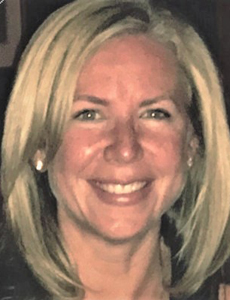
Laura Crossen, vice president of financial management, Bed, Bath and Beyond
Fully harnessing your team’s talent requires continual engagement and the forging of personal connections. Leaders create spaces where their “followers” feel empowered to speak up, question the status quo and contribute new ideas.
The shift to entirely remote work for many companies has made building and maintaining relationships more difficult, but open communication and idea-sharing is perhaps more important than ever as organizations seek ways to pivot and adapt.
Especially in today’s stressful environment, empathy is essential for leaders to stay connected with their team and encourage continual engagement.
“But it’s hard to feel engaged working virtually for an entire year. Reinforcing a sense of shared purpose, trust and camaraderie is vital, and we can do that in a few different ways,” Combs said.
“Use video in addition to audio so you can see each other’s faces. Set time aside for team-building sessions. Have conversations about the core values of your organization and of your team members. Try to create bonding experiences as much as possible. Help people open themselves up and build that sense of empathy. We really need to be gracious to ourselves and to our teams, because everyone’s going through a lot right now.”
“A corollary skill is asking good open-ended questions. People have a lot of information to offer if we’re willing to listen. The first step of expressing empathy is learning about your employees or fellow team members by eliciting participation,” added Engel.
3) Always Finds the Silver Lining
Projecting an optimistic attitude helps team members buy into future plans, believe in their work and stay engaged.
“Optimism is a skill that can be developed. Leaders have to be able to paint a picture of a better future for their team and communicate that message effectively and consistently,” said Adolfo Jimenez, vice president and treasurer, Sysco Corporation.
The challenges of 2020 were multi-faceted — economic recession, the specter of job loss, extra childcare or eldercare burdens, fear over personal health and the health of loved ones, social and political turmoil, and the overall struggle to balance it all while staying productive.
“The biggest challenge this year has been staying genuinely optimistic. We have to find a place of hopefulness, and part of that involves having more open dialogue with our teams and showing respect for differing opinions. We have to learn to express our views without hyperbole,” said Engel.
“As leaders, we need to be humble, to listen, to be inclusive, and help our team members find common ground.”
Closely tied to optimism is adaptability.
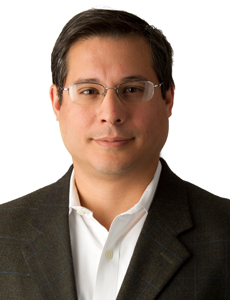
Adolfo Jimenez, vice president and treasurer, Sysco Corporation
When unanticipated hurdles pop up, leaders are quick to show the path around or over. Flexibility and realistic adjustment of goals keeps organizations moving forward instead of stagnant, which helps to buttress employee morale in difficult times. Setting an example of optimism helps team members find their own path forward.
“Approach each challenge with optimism. Look at each one as a time when the team can learn and grow. And celebrate successes through those challenges,” Combs said.
Jimenez and Crossen seconded that approach.
“All things pass,” Jimenez said. “This is a perfect opportunity to improve your organization. What weaknesses can you address now? Put yourself in a position to emerge from this crisis a stronger competitor than you were before.”
“We all respond to challenges differently,” Crossen added. “Take these moments and turn them into opportunities. Recognize the strength of each individual and note growth that people undergo as they pivot to face challenges. Praising that is a great opportunity to motivate your team. Make them see they are not just receiving change but driving change.”
What Made These Leaders Who They Are?
Leadership instincts are a product of both experience and purposeful skill development.
These four leaders agree that younger insurance and risk management professionals should view every position, responsibility or setback as a learning experience. The journey to leadership should not be rushed but rather examined and learned from.
Correcting mistakes and navigating challenges is what gives leaders the knowledge and credibility to guide teams through good times and bad.
“I would characterize my 20-year journey as a process of shaping my leadership style. I’ve seen a lot of ups and downs, cycles and transformational changes within the industry and the customers we serve. That all stitches together into a holistic perspective. Seeing the lifecycle of business through a multitude of environments has aided my development process,” Crossen said.
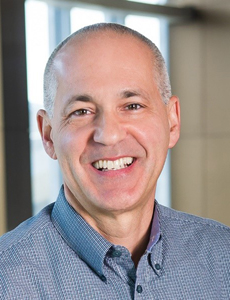
David Engel, director of risk management, AT&T
As best practices evolve, leadership qualities are likewise always in flux. Advancements in technology, workplace environments, and consumer and employee expectations all shape what effective leadership looks like.
As Jimenez said, “What worked yesterday may not work tomorrow.” Leaders must therefore continually learn from both mentors and mentees.
“Change is always the theme. Not a week goes by that we don’t hear about the rapid pace of change. I am continually learning and applying myself to understanding the implication of changing technology on my business. As they say, you don’t go to where the puck is, but where the puck is headed,” Combs said.
“I also look for opportunities to mentor folks with an eye toward leadership, not management, and am always receptive to mentorship myself. I learn as much from mentees as they do from me. Leadership is an ongoing process; we’re either growing and stretching, or we’re declining,” Engel added.
Achieving work-life balance and a sense of personal fulfillment is increasingly a trait of a strong leader.
To echo Engel, people are being asked to do more with less. Many professionals feel pulled in multiple directions and are vulnerable to burnout. Defining their own versions of success and achieving a balance between personal and professional obligations has enabled these executives to excel.
Importantly, this balance will look different for every individual. Balance for a parent of young children may mean more time at home and less at the office. An empty nester, on the other hand, may be able to devote more time and attention to work.
“I had, for example, a young man on my team once who was having marital problems, and he was the father of four young kids. We sat down to talk about his career progression. He was qualified for a promotion to VP … but the extra commitment could potentially cost him his family. Is that really a success?” Engel said. “The reality is the priority of our commitments will shift through different phases of life.”
“It’s important to be present in whichever space you’re currently in and minimize distractions. That allows you to be the best version of yourself, whether it’s risk manager, spouse, parent, child or friend,” Combs said.
“It’s about taking time to do what’s most important to you. It doesn’t matter how many roles or responsibilities you have; it’s being able to prioritize what matters. In my case, it’s my family. I make an effort to invest time with them, engage with them, make sure I schedule activities with them,” Jimenez said.
“Find the time to invest in yourself, because it makes you a more valuable team member to your organization, and a leader who people want to follow.” &







